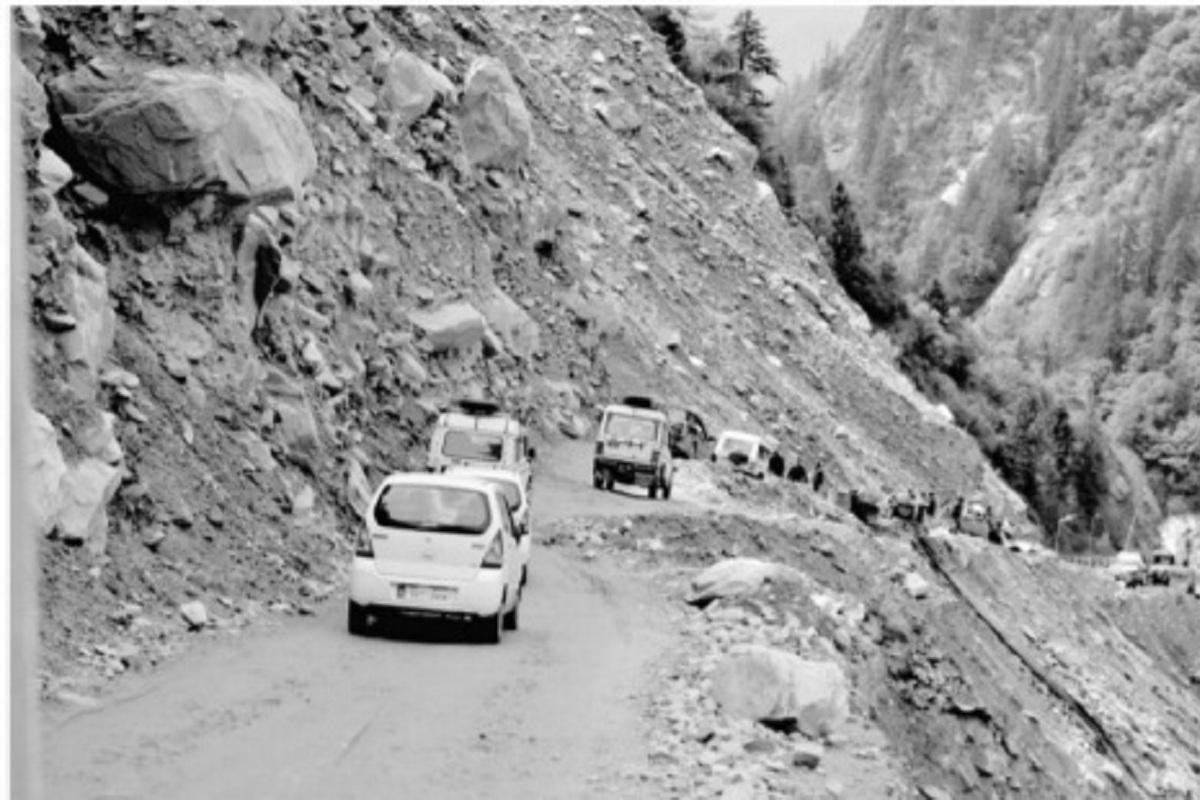Shankaracharya revives Kedarnath gold scam controversy, jumps in Delhi temple row
He said first, it was a gold scam in Kedarnath Shrine and now, they want to build the temple in Delhi.
The all-weather road project seems outdated. Any such project in Uttarakhand now needs to be all-climate.

(SNS)
People from all over the world come to India seeking spiritual enlightenment. One among the many pilgrimage circuits in India is the Char Dham (four abodes) journey, which includes visiting four holy sites located in four corners of the country. The sites are Badrinath (Uttarakhand), Dwarka (Gujarat), Rameshwaram (Tamil Nadu) and Puri (Odisha). Another set of Char Dham, sometimes referred to as Chota (smaller) Char Dham, is an equally important pilgrimage circuit located in the Himalayan state of Uttarakhand.
The Chota Char Dham includes Badrinath, Kedarnath, Yamunotri and Gangotri. For centuries, people of India and the world have undertaken the Char Dham yatra (journey). The Chota Char Dham yatra is also undertaken by many, even though the difficult Himalayan terrain makes this circuit quite challenging.
In recent times however, roadways development has made the Chota Char Dham circuit much more conducive for pilgrims. Approximately four million pilgrims visited the four abodes or shrines of the Chota Char Dham circuit in 2019. In December 2016, the Government of India launched a Char Dham Highway Project in Uttarakhand. The objective of this project is to improve connectivity to the shrines at Gangotri, Yamunotri, Kedarnath and Badrinath.
Advertisement
The project has been under construction, developing around 900 km of the national highway with an approximate cost of Rs 12,000 crore. The project was contested in the National Green Tribunal and the Supreme Court of India, resulting in a committee for reviewing its ecological impacts. Environmental groups and local NGOs have expressed serious concerns over the validity of this project which has increased the vulnerability of the region to natural hazards.
The Himalayan Mountains are also a globally recognized biodiversity hotspot. A biodiversity hotspot is a technical term given to an area which has high endemism (having at least 1,500 plants not found anywhere else) and where over 70 per cent of the original ecology has already been destroyed. An almost 100 km stretch of this highway project near Gangotri lies within a notified Eco-Sensitive Zone.
At the same time, the Himalayan landscape in Uttarakhand is located in a seismic zone, making it highly vulnerable to earthquakes. These facts ensure that any large-scale construction activity in Uttarakhand must be carefully scrutinized lest it destroy the region’s remaining ecology. But environmental consequences of this construction project are not the only concern. The year 2021 so far has changed our understanding and perception of climate change and its impacts.
The prolonged heat wave in North America, floods in most parts of Europe and Asia and forest fires around the world have come as a stern warning to humanity. These impacts have upset our climate change-induced disaster prediction models and have challenged our ability to prepare for averting natural hazards and for saving human life and property.
The events of 2021 have increased the disaster risks of already vulnerable ecosystems. The all-weather road project has created a two-lane road which passes close to the base of the mountains and along the course of the rivers. It is also constructing bridges, tunnels and at least one flyover near the base of the mountain close to River Ganga. At places, the Himalayas have been cut so deep for road widening that the stability of the slope has been compromised.
Adjoining green cover has been felled which has further reduced slope stability. The 2021 monsoon has already led to road cave-ins and collapse of walls made alongside roads to prevent falling rocks and landslides. The all-weather road project seems outdated. Any such project in Uttarakhand now needs to be all-climate. It needs to be developed in harmony with nature, without cutting a single tree and without altering the slope of the fragile Himalayas.
An underlying objective of the allweather road seems to be to scale up economic growth of Uttarakhand by attracting pilgrims all year round. But we cannot forget the fury of the 2013 Kedarnath disaster that killed thousands of people and left a trail of devastation. The all-weather road project should be abandoned and replaced with a much more eco-sensitive alternative.
(The writers are, respectively, Associate Professor and Dean at Jindal School of Environment and Sustainability, O.P. Jindal Global University, Haryana)
Advertisement